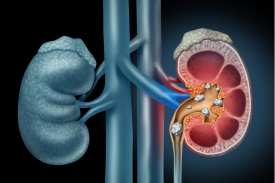Orthopedic Issues in Sports and Workplaces
Orthopedic issues can affect individuals across various sports and workplaces, often requiring specialized knowledge and tailored solutions. In this blog, well delve into the specific orthopedic challenges faced by different audience groups and professions, providing insights and guidance
tailored to their unique needs.
1. Athletes and Sports Enthusiasts:
Common Orthopedic Issues:
Knee Injuries: Athletes often experience ligament tears (ACL, MCL), meniscus tears, and
patellar tendonitis.
Ankle Sprains: Frequent in sports with rapid direction changes.
Shoulder Problems: Overhead athletes, like baseball pitchers, are prone to rotatory cuff
injuries.
Tailored Insights:
Proper Conditioning: Athletes should prioritize strength, flexibility, and agility training to
prevent injuries.
Rehabilitation: Timely and comprehensive rehabilitation is essential for full recovery.
Sport-Specific Guidance: Seek guidance from sports medicine specialists who understand
the unique demands of your sport.
2. Construction Workers and Laborers:
Common Orthopedic Issues:
Back Injuries: Heavy lifting and repetitive tasks can strain the lower back.
Knee and Hip Strain: Constant bending and squatting can lead to joint problems.
Hand and Wrist Injuries: Workers using hand tools are prone to carpal tunnel syndrome and
tendonitis.
Tailored Insights:
Ergonomics: Focus on proper lifting techniques, use of ergonomic tools, and regular breaks.
Safety Gear: Always wear appropriate protective gear to reduce the risk of injury.
Regular Check-Ups: Routine orthopedic check-ups can catch issues early.
3. Office Professionals:
Common Orthopedic Issues:
Cervical and Lumbar Strain: Poor posture and extended sitting can lead to neck and back
pain.
Carpal Tunnel Syndrome: Repetitive typing and mouse use can cause wrist pain.
Eye Strain: Prolonged screen time can contribute to eye discomfort.
Tailored Insights:
Ergonomic Setup: Invest in an ergonomic chair, keyboard, and monitor setup.
Stretching and Posture: Incorporate regular stretches and maintain good posture.
Screen Time Management: Follow the 20-20-20 rule: Every 20 minutes, look at something
20 feet away for at least 20 seconds.
4. Healthcare Workers:
Common Orthopedic Issues:
Lower Back Pain: Lifting patients and constant standing can strain the back.
Shoulder and Neck Strain: Frequent patient handling can lead to shoulder and neck pain.
Carpal Tunnel Syndrome: Repetitive charting and computer use can cause wrist pain.
Tailored Insights:
Proper Lifting Techniques: Healthcare workers should be trained in safe patient handling.
Ergonomics: Use adjustable equipment and take breaks to prevent strain.
Stretching and Strengthening: Engage in exercises to strengthen the back, neck, and
shoulders.
5. Teachers and Educators:
Common Orthopedic Issues:
Neck and Shoulder Pain: Standing for extended periods and repetitive gestures can cause
discomfort.
Voice Strain: Constant talking can lead to vocal cord issues.
Low Back Pain: Poor posture during long hours of grading and planning.
Tailored Insights:
Posture Awareness: Maintain good posture during teaching hours.
Voice Care: Practice vocal hygiene and seek help for persistent voice problems.
Movement Breaks: Incorporate short breaks for stretching and movement.
Conclusion
Orthopedic issues are not one-size-fits-all, and tailored approaches are essential for addressing the
specific needs of different audience groups and professions. Whether you an athlete, a
construction worker, an office professional, a healthcare worker, or an educator, understanding the
unique orthopedic challenges you face and implementing targeted solutions can help prevent
injuries and improve overall well-being. Consulting with orthopedic specialists when needed ensures
that you receive the most relevant and effective care for your specific circumstances.



